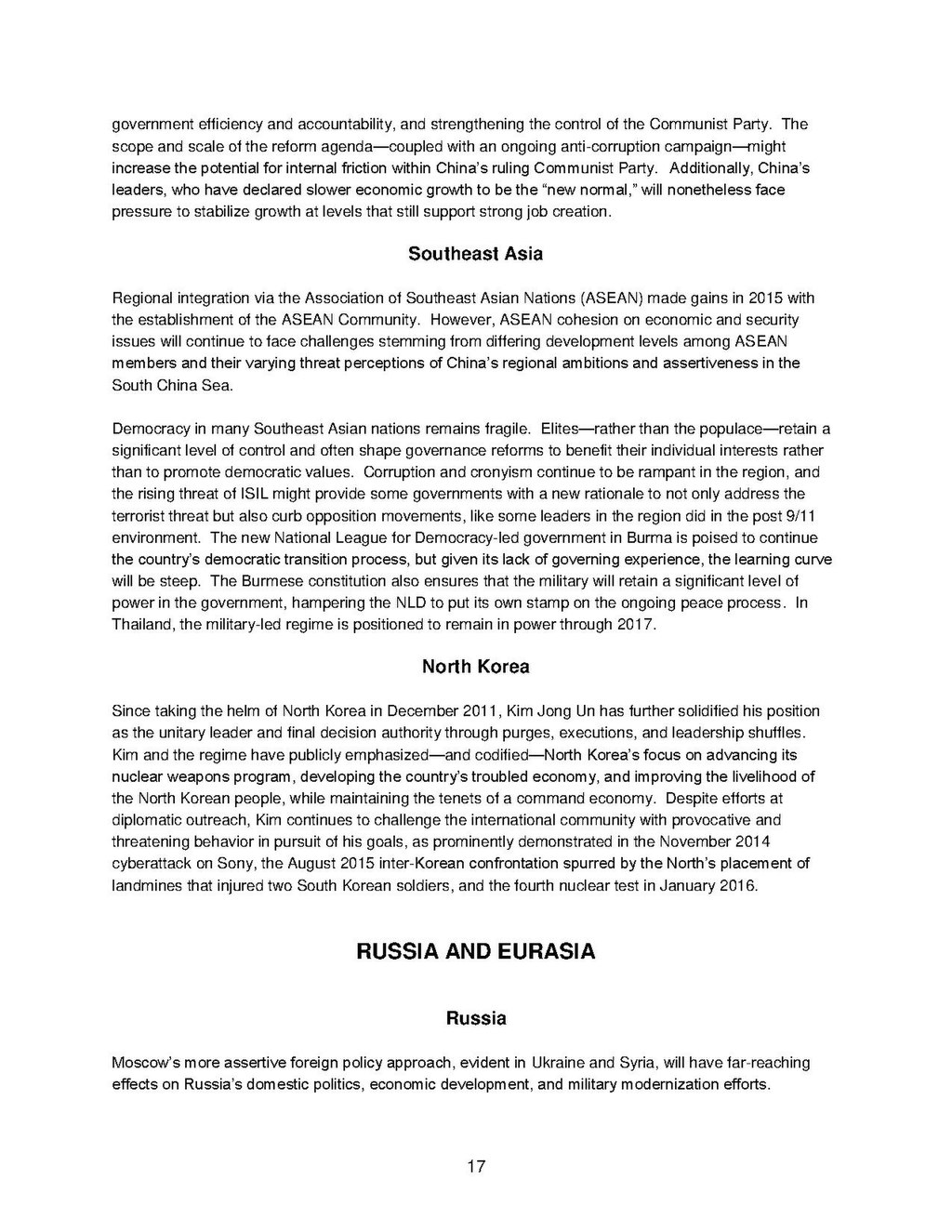government efficiency and accountability, and strengthening the control of the Communist Party. The scope and scale of the reform agenda—coupled with an ongoing anti-corruption campaign—might increase the potential for internal friction within China’s ruling Communist Party. Additionally, China’s leaders, who have declared slower economic growth to be the “new normal,” will nonetheless face pressure to stabilize growth at levels that still support strong job creation.
Southeast Asia
Regional integration via the Association of Southeast Asian Nations (ASEAN) made gains in 2015 with the establishment of the ASEAN Community. However, ASEAN cohesion on economic and security issues will continue to face challenges stemming from differing development levels among ASEAN members and their varying threat perceptions of China’s regional ambitions and assertiveness in the South China Sea.
Democracy in many Southeast Asian nations remains fragile. Elites—rather than the populace—retain a significant level of control and often shape governance reforms to benefit their individual interests rather than to promote democratic values. Corruption and cronyism continue to be rampant in the region, and the rising threat of ISIL might provide some governments with a new rationale to not only address the terrorist threat but also curb opposition movements, like some leaders in the region did in the post 9/11 environment. The new National League for Democracy-led government in Burma is poised to continue the country’s democratic transition process, but given its lack of governing experience, the learning curve will be steep. The Burmese constitution also ensures that the military will retain a significant level of power in the government, hampering the NLD to put its own stamp on the ongoing peace process. In Thailand, the military-led regime is positioned to remain in power through 2017.
North Korea
Since taking the helm of North Korea in December 2011, Kim Jong Un has further solidified his position as the unitary leader and final decision authority through purges, executions, and leadership shuffles. Kim and the regime have publicly emphasized—and codified—North Korea’s focus on advancing its nuclear weapons program, developing the country’s troubled economy, and improving the livelihood of the North Korean people, while maintaining the tenets of a command economy. Despite efforts at diplomatic outreach, Kim continues to challenge the international community with provocative and threatening behavior in pursuit of his goals, as prominently demonstrated in the November 2014 cyberattack on Sony, the August 2015 inter-Korean confrontation spurred by the North’s placement of landmines that injured two South Korean soldiers, and the fourth nuclear test in January 2016.
RUSSIA AND EURASIA
Russia
Moscow’s more assertive foreign policy approach, evident in Ukraine and Syria, will have far-reaching effects on Russia’s domestic politics, economic development, and military modernization efforts.
17
